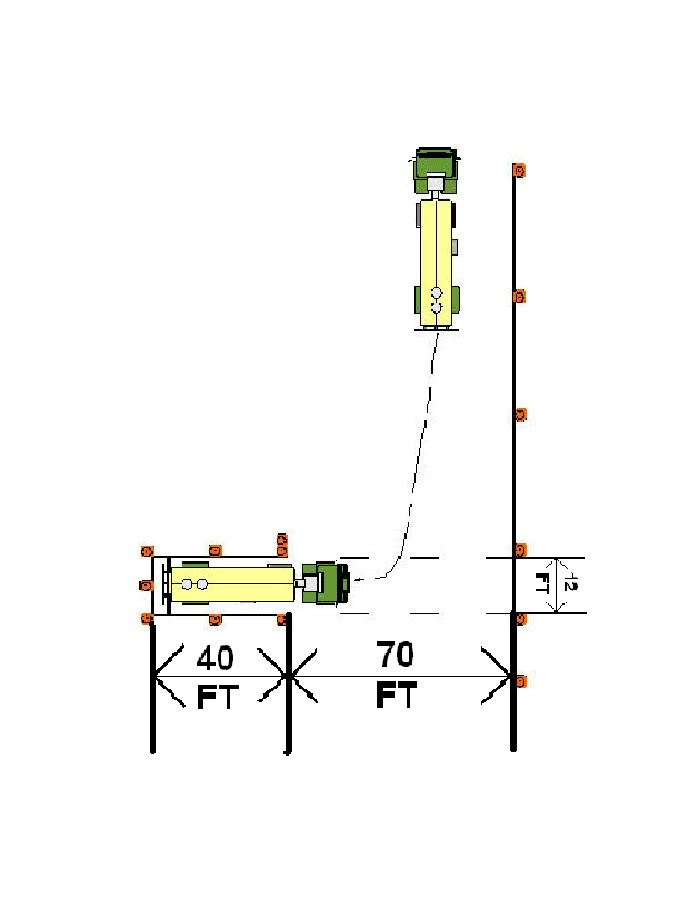- Driver's Test Parallel Parking Requirements
- Mn Driver's Test Parallel Parking Dimensions
- Pa Drivers Test Parallel Parking Dimensions
DMV Cheat Sheet - Time Saver

Passing the written exam has never been easier. It's like having the answers before you take the test.
- Computer, tablet, or iPhone
- Just print and go to the DMV
- Driver's license, motorcycle, and CDL
- 100% money back guarantee
Few driving tasks are as intimidating as parallel parking. Many new motorists have failed an otherwise perfect driving test on this technicality alone. How many of us avoid parking on busy streets because we're just not good at parallel parking? Thank goodness for strip-mall parking lots the size of a small state―maybe humiliation-free parking is the real motivation for suburban sprawl..
Many new motorists have failed an otherwise perfect driving test on this technicality alone. How many of us avoid parking on busy streets because we're just not good at parallel parking? Thank goodness for strip-mall parking lots the size of a small state―maybe humiliation-free parking is the real motivation for suburban sprawl. Parking test: Before going out on the road, you will be required to pass a parking test. Successful completion of a three-point turn is required at all MVD offices that offer road tests, with the exception of Coolidge, Holbrook, Nogales, Payson, Show Low, Tempe and Winslow, which require parallel parking. Parallel Park can be performed in the 100’ by 24’ CDL Test Practice Pad The truck starts in the lane next to the parking space, pulls forward (Just past the space)and backs into.
Guarantee to pass your driver's license road test with simple and easy tricks. The tutorial includes cones that can be found at any driver's license center o.
Driver's Test Parallel Parking Requirements

- Seek out a space you feel comfortable that you can safely get your car into without crunching into another car. Drive around the block until you find a larger gap if you need to; you will need a space that's several feet longer than your car.
- Check your rearview mirror and driver-side mirror as you approach the space to ensure another car is not riding on your tail. Signal toward the space as you approach it, slow down, and stop. If another motorist rides up on your rear, simply maintain your position and keep signaling. You might even need to roll down your window and wave the other driver around; they might not have realized you're trying to park.
- Line up your vehicle with the parked vehicle directly in front of your desired spot. Don't get too close on the side, or you might scrape the other car when you make your move. But you also don't want to be too far away―two or three feet will suffice. Position your vehicle parallel to the parked car, aligning your bumpers.
- Checkyour surroundings. Use all your mirrors and check your blind spotsfor cars, bicyclists and pedestrians BEFORE you begin to reverse your car.
- Put your vehicle in reverse. Look over your other shoulder at the space to assess the gap.
- Release the brakes and slowly begin backing into the turn.
- Turn the steering wheel when you see the front car's back bumper. When your back axel is aligned with the front car's bumper, turn your steering wheel all the way to the right (assuming you're parking on the right-hand side of the road).
- Reverseuntil your car is at a 45-degreeangle. Then, turnyour steering wheel in the opposite direction. Imagineyour car is creating an S shape as you are maneuvering into the spot.
- Keep backing up until your car is in the spot. Besure to take a few quick glances at the front of your car to make sure youdon't hit the vehicle in front of your spot.
- Pullforward to straighten out. Once you're in the spot, you can turn the steeringwheel so your tires are parallel to the curb.
Mn Driver's Test Parallel Parking Dimensions
Voila! At this point, if all went well, you should be tucked nicely in the space and parallel parked. If you aren't, there's no harm done. Just signal that you're about to leave the curb, pull out and alongside the car in front of you, signal toward the curb again, and start over. You won't be the first person―and certainly not the last―who tries parallel parking a few times before getting it right.
Pa Drivers Test Parallel Parking Dimensions
Keep in mind that some states require your vehicle to be within a certain distance from the curb. The ideal distance when parallel parking, for the safety of you and your vehicle, is to be within a few inches of the curb. If you're not close enough, don't be afraid to start again. And remember—practice makes perfect!